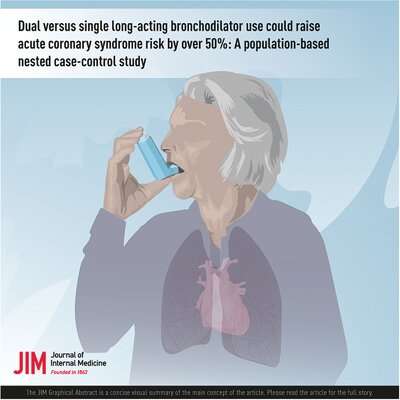
People using two different inhalers for common chronic lung diseases are more than 50 percent more likely to have a heart attack than those on just one, new University of Otago-led research reveals.
Inhaled long-acting muscarinic antagonists (LAMAs) and long-acting beta-agonists (LABAs) are the main drugs used to treat chronic obstructive pulmonary disease (COPD) – the umbrella medical term for emphysema and chronic bronchitis. While both drugs are bronchodilators and open the airways, they work in different ways and in some cases, patients are prescribed both.
Research undertaken by Otago and Auckland universities, and published recently in the Journal of Internal Medicine, found that when these drugs are taken together, the patient’s risk of suffering an acute coronary event increases.
Associate Professor Lianne Parkin, of Otago’s Pharmacoepidemiology Research Network says people with COPD already have a high risk of acute coronary syndrome, so it is important to identify factors that might increase that risk even further.
Limited evidence suggested that the use of both inhalers could be associated with a higher risk of coronary events than using just one. This study used anonymised data for all patients who have had a cardiovascular risk assessment in general practices in two regions of New Zealand.
“It was particularly important to examine the risk associated with the use of LAMAs and LABAs because the clinical benefits of these drugs are modest and people with COPD are more likely to die from coronary events than from respiratory failure.
“We compared the risk of acute coronary syndrome in people who had been given both LAMA and LABA inhalers to treat COPD with the risk in people who had only been given a LAMA inhaler.”
In the study’s real-world clinical practice setting, the risk of acute coronary syndrome was more than 50 percent higher in patients with COPD who used two long-acting bronchodilators rather than one.
In absolute terms, about eight people per year out of every 1,000 using both a LAMA and LABA for COPD experienced an acute coronary event that they would not have had if they had just used a LAMA.
Co-author and respiratory physician Dr. Jack Dummer says the findings of a higher risk of acute coronary syndrome with dual therapy is something for patients and healthcare providers to consider when weighing up the potential benefits and harms of escalating treatment from one to two long-acting bronchodilators—especially for those patients who have a high absolute risk of future cardiovascular events.
University of Otago

